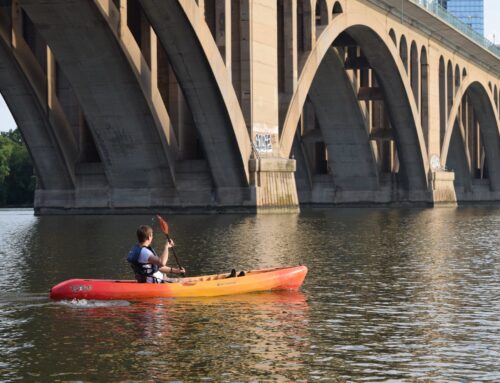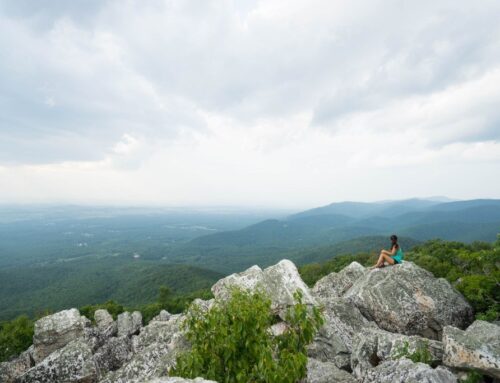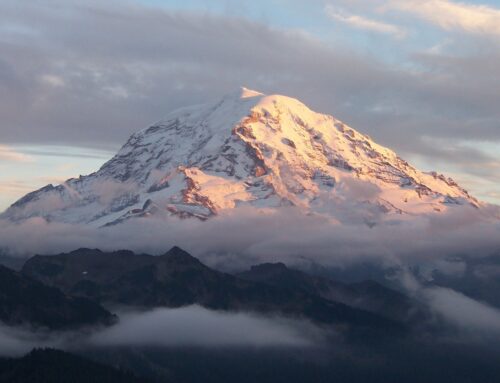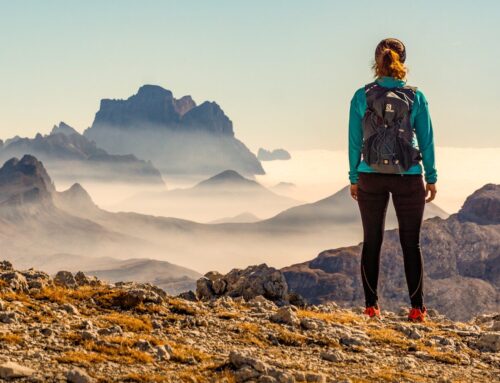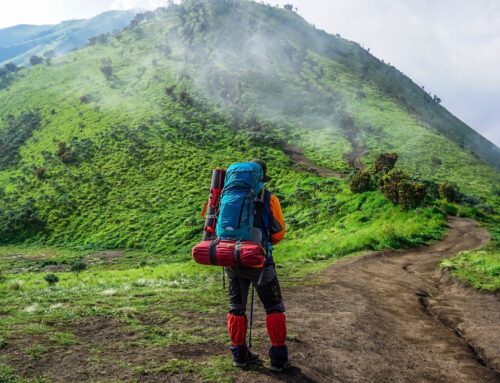Updated November 1, 2020
Summiting a “14er” (that is, a peak whose altitude is over 14,000 feet), is one of the most popular Colorado bucket list items among hikers. These tall, towering peaks dotted around the mountain ranges of the state are some of the toughest summits to reach in Colorado, which is what makes them so coveted. Among some of the less technical, more accessible 14er summits is the Quandary Peak hike, which begins near Breckenridge, CO and climbs over 3,000 feet to a summit of 14,265 feet. In this post, we’ve outlined our complete review and tips for conquering this beautiful peak and experiencing the thrill of a high altitude summit for yourself.

Quandary Peak Trail: The Basics
The Quandary Peak hike is best known for two things: being the closest 14er to Breckenridge, CO and being one of the easier 14ers to summit in Colorado. While it’s still definitely a strenuous hike, it’s certainly one of the most accessible 14er summits in the state. In fact, one member of our group hiked this summit in flip flops (although we do not recommend this; please wear a sturdy pair of hiking boots on this trail!).
Because this summit is non-technical, lots of hikers of different experience levels attempt to bag this peak on weekends in the warmer months of the year. It’s one of the most popular 14ers in Colorado for this reason.
Here’s a quick snapshot of the Quandary Peak hike:
- Trail Distance: ~7 miles
- Elevation Gain: 3,100 feet
- Difficulty: Strenuous
Things to Know Before Hiking Quandary Peak
Hiking the Quandary Peak Trail is fairly straightforward, but here are a couple of things to know before you head out:
- Parking for the Quandary Peak hike is limited, so prepare to arrive early. There is a designated parking lot for the trail, but it fills up as early as 7 AM on weekends or holidays. Many people park along the street once the parking lot is full, but there have been some reports of enforcement of illegal street parking. Proceed with caution if you choose to do this.
- Like most summit hikes, the last half of the trail is completely exposed. Be sure to come armed with sweatproof sunscreen, a breezy trucker hat, and polarized sunglasses to protect yourself from the direct sun rays at altitude.
- Bring lots of water, as there are no water sources along the trail. Literally, there are zero. Be sure to pack all of the water you need in a water bladder or a thermal water bottle. We had a fellow hiker ask us for water about halfway up the trail…don’t be that guy!
- You’ll probably see at least one mountain goat along the path. Don’t be alarmed! These guys hang out above the tree line on the mountains near Breckenridge and are generally docile when left alone.

Quandary Peak Hike Review
Beginning the Hike
Once we parked, we walked past the parking lot up a dirt road toward the official trailhead. The trail was very clearly marked, and there were a lot of people embarking at the same time, so we had no trouble finding the trailhead on the left hand side of the street. Armed with all of the important day hiking essentials and lots of cold water, we felt apprehensive but ready to tackle the 7+ miles of the Quandary peak hike.
The first section of the hike was a steady incline through the pine forests, which provided plenty of shade and protection from the sun as we began our ascent. It wasn’t too bad yet, but several of us could already feel the toll on our lungs from the altitude (we’d just gotten to Breckenridge a few days prior). Several steep switchbacks brought us up through the first mile, which ended with a little bit of rest on a fairly flat section of trail.
Crossing the Tree Line
After we crossed the last bit of tree shade, we found an exposed field of rocky scree and large boulders. The steepness remained about the same as before, but with the sun now beating down on us, the hike became a bit more difficult.
We continued onward for about 45 minutes in this section, pushing forward and taking breaks as needed. Not surprisingly, our group’s chatter quieted at this point, all of us in silent agreement to save our breath for the hard work ahead. After another 1.5 miles or so, we reached the saddle, which again provided a little bit of flat trail before the last, steepest ascent to the peak.

The Last Push to the Summit
The final push to the summit after the saddle was definitely the hardest. By this time, it was mid-day and the sun was high above us, and all we could see ahead on the trail was boulders and rocky scree along the path. In the last 1 mile or so, the elevation gain was ~1,000 feet with a steep grade of 25%+. Although it was a short distance, this part felt like it took the longest and required the most stops.
After several quick pauses to catch my breath, I finally made it over the final bump to the summit area, which was a flat walk across the peak to the official summit. We ended up spending around 45 minutes up top, taking photos with cardboard signs and admiring (or maybe being intimidated by…) some of the snowy white mountain goats that accompanied us up there.

Once it was time to descend, we went back the way we came, trying our best not to slide down the steep paths of gravel and scree. None of us brought trekking poles, but if I were to ever tackle this hike again, I’d definitely bring them as they’d definitely be really useful for the descent. The descent from the summit to the car took us an additional ~2 hours, after which we were definitely ready for a big lunch and some much-needed R&R.
Additional Resources for Hiking in Colorado
What to Pack
- Breathable hiking clothes – For warmer hikes, you’ll want to wear a sweat-wicking shirt and breathable pants, like these Patagonia hiking shorts for men and women. For cold-weather hikes, we recommend dressing in layers, including merino wool baselayers for men and women, a down puffer jacket for men and women, and a Northface waterproof outer shell for men and women (a must for hiking in Seattle). And don’t forget a pair of the best women’s and men’s hiking socks!
- Trekking poles – You won’t need these for every single hike, but we suggest throwing them in your car just in case. We recommend the Black Diamond Trail Ergo cork trekking poles, which are lightweight, easy to transport, and durable.
- Water bottle – Having water available at all times is a huge must. To limit disposable plastic, we recommend bringing your own refillable water bottle. We’re obsessed with Hydro Flask water bottles because they keep water cold for hours.
- Sunscreen and bug spray – Sweatproof sunscreen and DEET bug spray can help you avoid sunburn and bug bites, two of hiking’s most annoying after-effects. Our favorite kind of sunscreen is Sun Bum, as it is free of harsh chemicals and safe for marine life, including coral reefs.
- A brimmed hat or cap – The sun can be brutal in open hikes, so always pack a brimmed hat or cap for day hikes in the sunshine.
- Emergency blanket and first aid kit – We’d strongly recommend bringing a first aid kit and a lightweight emergency blanket on every hike. Why? Because the unfathomable can happen, and it’s always best to play it safe.
- Durable day pack – A durable day pack is the perfect spot to stash all your hiking gear. While any backpack will do, we recommend the Osprey Tempest 20 or the Talon 22 day packs because they’re comfortable and breathable for long hikes. For more information, check out our best day packs for any terrain guide.

